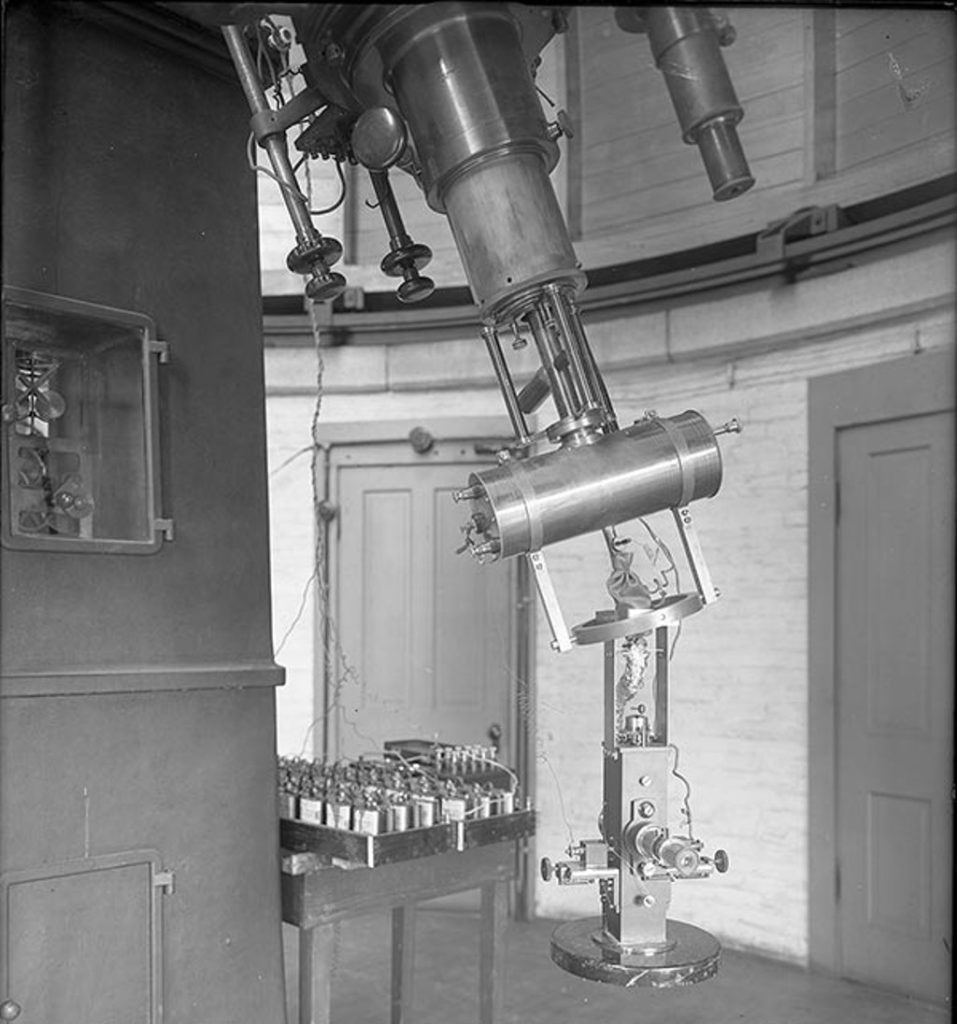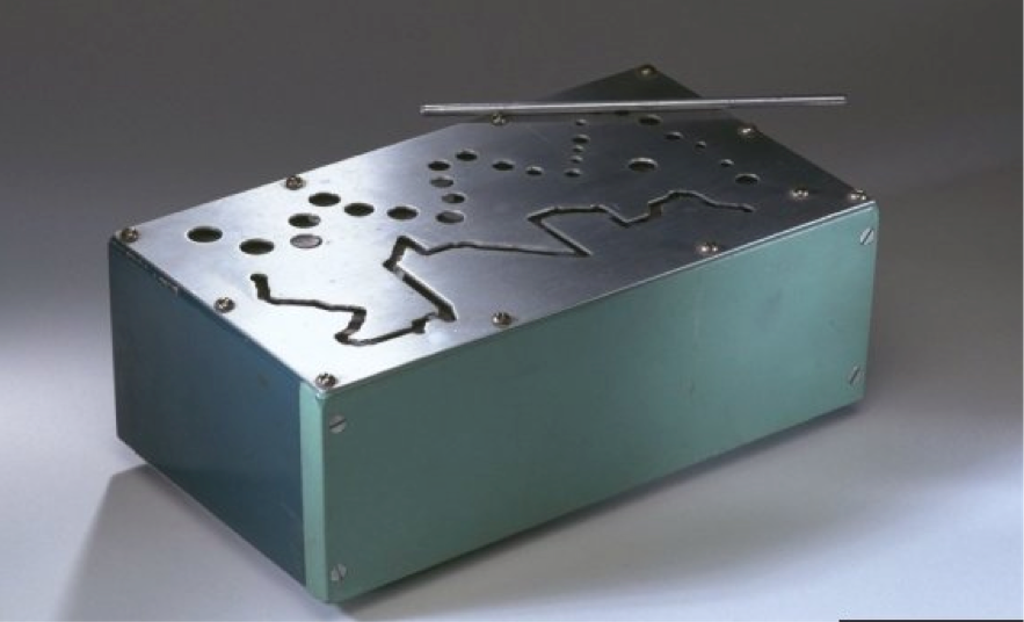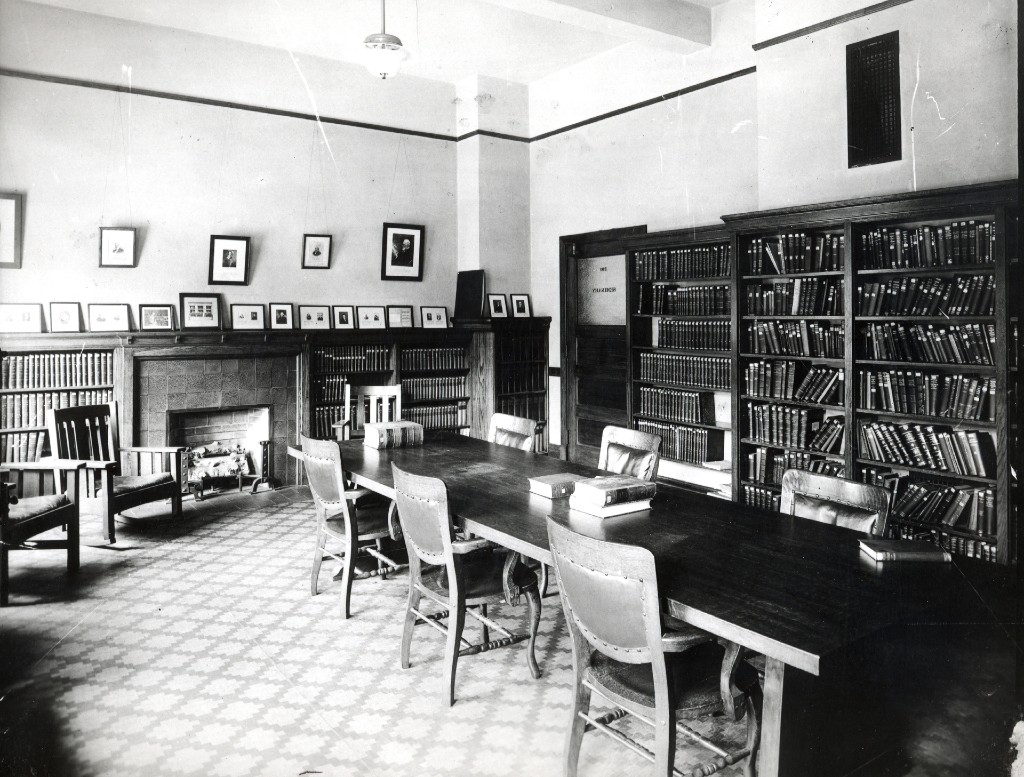With a university the size of University of Illinois, it’s overwhelming to ponder the scope of research and innovation that is happening right here in our community at this very moment, much less over the course of the university’s history. Many of us going about our lives in C-U really have no idea, even those who have a U of I connection. It’s a sentiment that Mike VanBlaricum, U of I alumnus and chief scientist at the Toyon Research Corporation heard from many people, including former U of I Provost Andreas Cangellaris, who VanBlaricum met in 2010 while serving on the Electrical and Computer Engineering Alumni Board. Their conversation set the wheels in motion for what would eventually become the Illinois Distributed Museum.
VanBlaricum set about creating a list of innovations related to engineering at U of I.
“After many searches as well as many discussions around campus, it became clear that there were several exhibits and artifacts about engineering spread across campus including the Spurlock Museum (Bardeen’s music box, Illiac-I memory core, and first plasma screen — to name a few) and The Sousa Archives (Sal-Mar Construction – first music self-composing machine). Many of the departments had displays in their lobbies and hallways, and I discovered many more artifacts and exhibits hidden in labs, offices, and closets.
There are also a set of brass plaques on campus highlighting innovations but they were not correlated to exhibits and in many cases were not at the location were the innovation had occurred. There was no unifying way to know what was on campus so a person could easily visit or study these innovations.”
Mike VanBlaricum
He had the idea to connect all of these together virtually, so that people could find them using their mobile devices — a virtual museum that people could “tour” online or on campus. The original proposal was for the Distributed Engineering Innovations Museum. Once other departments on campus became aware of the idea, it was clear that it should become the Illinois Distributed Museum, including innovations from all corners of the University. It launched in 2017 as part of the University of Illinois Sesquicentennial.
The museum is coordinated by Kristen Allen Wilson, out of the University Archives. Says VanBlaricum, “Under Kristen’s guidance the software for the IDM was rewritten to make it compatible with the Library’s formats and to make it easier to update. Kristen has greatly expanded the number of on-line exhibits and stories in the IDM.” Wilson shared more about this unique resource.

Smile Politely: Why is it important to have a resource like this at the University?
Kristen Allen Wilson: These virtual exhibits often tell the stories of innovations taking decades to develop (like the PAC-1 anticancer drug), how university policy and funding can affect innovations (like Tykociner’s sound on film) and how sometimes serendipity plays a role in the process of innovation (an example would be the photoelectric photometer). These themes are present in many of the innovation stories throughout the museum. With the IDM being online, it also allows greater access for people across the state and world to learn about these innovations. They are able to learn about the people and ideas and if they want to learn more, they can contact us and easily be put in touch with the Archives Program Officers who can help them find more materials in the University of Illinois Archives to research these individuals. Some of these people and ideas can be hard to find in other places. One of our most popular exhibits is Beverly Greene, the first licensed African-American woman architect in the United States, as it can be difficult to find information on her elsewhere.
SP: How can someone best utilize the IDM? Who is the intended audience?
Wilson: The Illinois Distributed Museum is a great resource for anyone who enjoys learning about ideas and technologies that have changed the world. The primary audience is those who live in Champaign-Urbana or are visiting the University, since they can take full advantage of the website. The best way to use the website is to come to campus and walk through one of our 13 tours. This will help thematically connect the exhibits and you can see objects, documents, and buildings related to the innovations. That said, many people around the world have found it useful for research of specific people and innovations.
With the Illinois Distributed Museum’s content being hosted online, it gives people greater access to
information about historic and current innovations. It is also fun to just explore our “exhibits” (one page
webpage) and learn more about a variety of advancements that have come from the University of
Illinois.
SP: How are topics selected, and who gathers the information for inclusion on the site?
Wilson: Innovations and innovators are selected by meeting the criteria in our definition for innovation;
innovation is broadly conceived as the processes, knowledge frameworks, methodologies and/or
technologies that provide a novel approach to meeting a societal need or solving a societal problem. It
has to be a process, knowledge framework, methodology, or technology. It had to be novel or new when
it was created, but it does not have to be the “first.” This is because many times multiple people were
working on solutions to the same problem around the same time so it can be hard to determine who did
it first, especially if one person’s solution became more popular than another’s solution. Finally, at least some of the work must have taken place on the Urbana-Champaign campus. One reason is because there is a location related to each innovation on campus on the museum website. The other reason is there are so many innovations that have occurred on campus and even more innovations by alumni after they left campus. Keeping it just innovations developed on campus, for now, helps to reign in the amount of the content we need to feature. We currently have 142 exhibits published and about 30 more in the editing stage, along with over 100, and counting, exhibits that need to be written.
While I am the one who gathers all the information, I work with my colleagues in the University Archives
as well as faculty, staff, and students across campus. I often contact faculty that have more recent
innovations and ask if they would be willing to write an exhibit about their work or let one of our interns
write an exhibit. I also meet with department heads who are able to point me to past or present
innovations from their department. My colleagues in the University Archives also let me know of historic
and current innovations they come across that would fit the Illinois Distributed Museum’s mission. I also
use the many books written about the University of Illinois (including the Men and Ideas in Engineering
Mike talked about, as well as newer books, like Women and Ideas in Engineering). We also work closely
with the history department and have student interns from their department. They have written many
of the exhibits on the website.

SP: Can you talk about the “tours” offered?
Wilson: The tours are an important part of the Illinois Distributed Museum. They are all self-guided tours so you can take them at any time, but it is best to take them during hours when the buildings would be open as some tours take you to objects or documents that are located in the buildings. Some of the exhibits highlight a building so you can still take tours when the buildings are closed too. These tours help to connect our exhibits through a central theme. They are a great way to explore many different disciplines and see the wide variety of amazing work that has been done at the university. We have tours that focus on innovations that mostly come from the same college or department, as well as tours that span multiple colleges. The tours have a suggested path but you can go to the locations in any order you
would like. You are also welcome to use the tours function without traveling to the different locations.

SP: Anything else you think readers should know?
Wilson: The Illinois Distributed Museum is constantly being updated with new exhibits, so users should check back often to find new information. This is a website for everyone and we have content from many
different disciplines, from the creation of the game Operation, to poets like Brigit Pegeen Kelly, to
creating computer programs to help figure out the optimal food for farm animals. There are so many
different and diverse topics that anyone can find something they are interested in. We also will be
having our first guided in-person tours which will be led by this semester’s history interns. That will be at
the end of April and you can check out our website and Facebook page for exact dates and times later in
February. Last year we had 13,862 unique visitors from 140 countries with just under 10% of visitors
from Champaign-Urbana and we would love to see that percentage grow in 2023.








